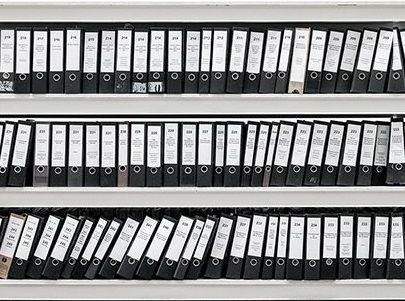
The use of data to record and analyse trends within a business environment seem commonplace today and very much a modern invention but, you might be surprised to know that the first reference regarding the use of data to help make business decisions was in 1865. The phrase ‘Business Intelligence’ was used in the Cyclopaedia of Commercial and Business Anecdotes to describe the work of Sir Henry Furnese, who famously profited from gathering information and acting on it to beat his competitors.
It's true that businesses have taken a quantum leap forward in recent times. Modern businesses now use data to help shape their strategies by analysing historical data and understanding predictive trends to anticipate the future. The increased use of data as a means of business intelligence is fuelled further and made possible by two other key trends: Moore's Law and the Internet of Things (IoT).
What is Moore’s Law?
In short, Moore’s Law states that the overall processing power of a computer will double every two years. While the actual rate of increase has differed year on year since the 70s, Moore's Law was true when the term was first coined and used. Over the last two decades since the turn of the millennium, the processing capacity and speed have seen an exponential increase. In a way, this means that more data can now be stored as it can be shifted and analysed at a faster rate.
And the Internet of Things?
The second trend observed in the last decade is related to the huge influx of data points that are recorded, logged and considered over the last two decades. The rising trend known as the Internet of Things (IoT) has led to a significant rise in digital activities being recorded and analysed.
So how have these trends affected the recruitment industry?
One of the key ways in which the increased gathering and analysing of data and business intelligence has impacted the recruitment industry is through the development of Applicant Tracking Systems (also known as ATS). These are smart software that an increasing number of companies are now using to help them filter through the CVs received. ATS works by processing your CV against specific role requirements set out by businesses and are most often employed before any human eyes will even review any of the applications.
Applicant Tracking Systems are developed to help companies of all sizes to receive and review countless online applications, often against multiple vacancies, in an efficient and effective manner. This approach allows hiring managers or recruitment consultants to then draw up a shortlist of the most qualified and experienced applicants for the role – streamlining the screening and hiring process altogether!
ATS is commonly used in most hiring businesses now and are increasingly becoming more sophisticated in the ways that they review and filter CVs. The arrival of artificial intelligence (AI) has started to add increased functionality to these systems. In an article by Forbes, it details how the combination of AI in ATS now means that they are intelligent enough to help automate and schedule interviews while also testing applicants on technical requirements as well as enabling other aspects of the recruitment process to take place earlier on. In other words, the smarter systems now allow modern-day businesses to make their recruitment process even more effective and efficient than before.
How to beat the ATS?
There are a few ways to help you beat ATS's screening process that will help you maximise the success of your CV. Here are a few quick tips:
- Keep the format of your CV simple so that the ATS can ‘read’ it easily
- Make sure that you tailor your CV individually for each role that you’re applying for
- Be sure to include the right keywords for the role within your CV but don’t over-stuff your CV with them
- List any relevant qualifications detailed in the job description
- Make sure that the section on your work experience contains the most relevant information
- And avoid making these 23 CV Mistakes!
Just be careful not to over-optimise your CV with keywords as this approach may not read as well to the human eyes.
To summarise:
It’s highly likely that data and business intelligence will play an even bigger role in the hiring and recruitment process of the future. The leap forward made possible by the emergence of AI along with the influx of data is predicted to come together to revolutionise areas of the business in the next coming decade.
According to some trend forecasters and industry thinkers, data and AI will be an integral part that will help shape the future of business. These two components will come together to help businesses of all sizes make informed, smarter and better decisions with one of the predicted areas of impact in the nearest future being the interviewing process. Based on the data trends and predictive models, we might soon be seeing algorithm-driven assessments of applicant suitability!
Whether or not they become the mainstream route in the near future, one thing's for sure is that the use of data within the world of business is only likely to increase from here onwards.
Read 9 Basic Interview Mistakes To Avoid





